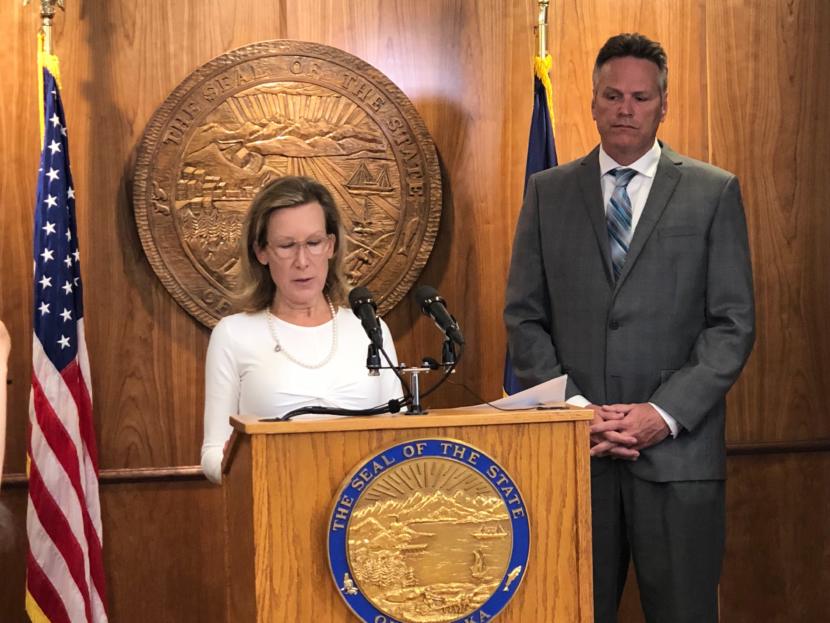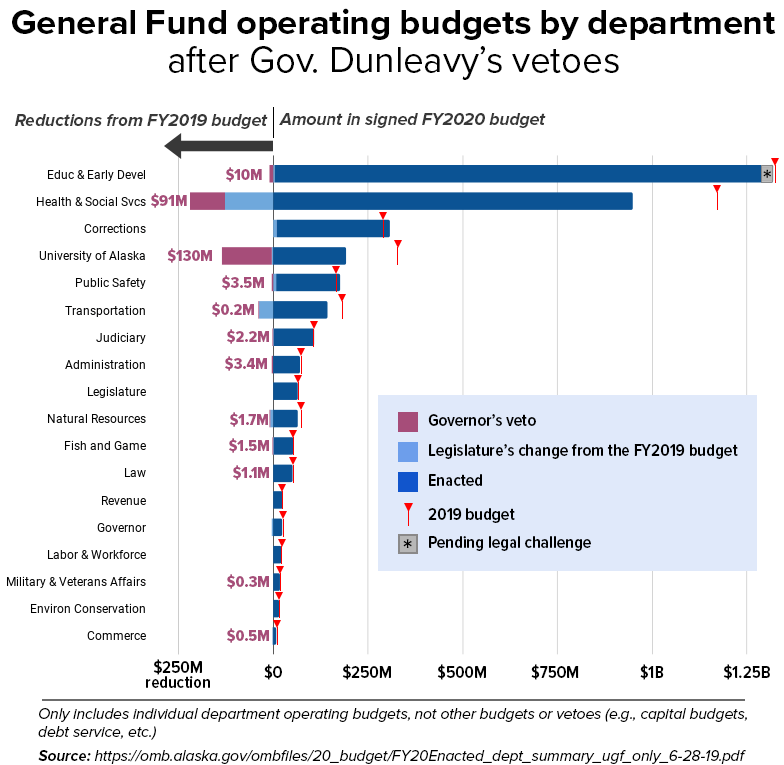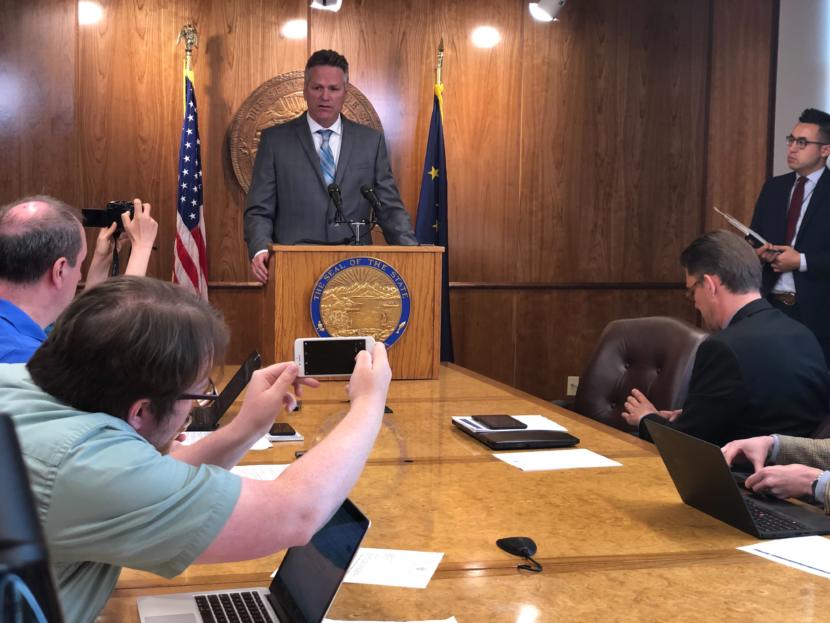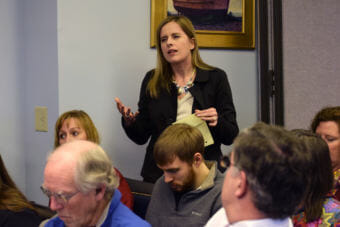
Gov. Mike Dunleavy vetoed 182 separate line items from the state’s operating budget.
During a Friday press conference, Dunleavy said the cuts were necessary to balance the budget by next year, while still paying full permanent fund dividends under the formula in state law.
“We ran on a platform of trying to close this budget,” Dunleavy said. “We’re focused on doing that. We’re using an approach in which we are reducing the size of government. We believe we can get there. It won’t be easy. But the other options were not going to be easy as well.”
The largest veto was a $130 million cut to the university system. Other large cuts were $58 million from Medicaid, including eliminating adult preventive dental service, and $68 million to payments on school bonds and rural school construction. Senior benefits payments — totaling $21 million — would be eliminated.

Dunleavy said people who rely on state services will benefit from the full dividends. And he said that when laws conflict with the PFD law — like the new limit on draws from permanent fund earnings — he plans to prioritize the dividend law.
“We need to provide for a full PFD,” Dunleavy said. “And until that statute is changed, or until the people of Alaska have a voice in changing that statute, we’ve got two statutes that some say in some respects compete. But we believe that, again, the calculation for the PFD — the decades-old calculation for the PFD — still needs to be honored.”
Dunleavy vetoed about half, or $5.6 billion, of a $10.6 billion transfer from permanent fund earnings to the protected part of the permanent fund.
“We want to make sure that we are thoroughly looking at how much money can be transferred without risking a full statutory PFD and the operations of the permanent fund,” he said.
Dunleavy said it will take another year to balance the budget. Deeper cuts are planned next year to Medicaid and the ferry system. And Dunleavy will likely return to his proposal for significant cuts to public education. But the governor is hopeful about the future.
“For years, for decades, Alaska’s government side of the economy has been pretty big. It’s going to be smaller. But that doesn’t mean Alaska’s best days are behind us. Quite the contrary, I think Alaska’s best days are ahead of us,” he said.

While the school bond debt veto will affect municipalities, other vetoes are focused on the Unorganized Borough — that’s the parts of Alaska that haven’t incorporated into organized boroughs. There are $3 million in cuts to Village Public Safety Officer positions that haven’t been filled, as well as a $2 million cut closing the Nome Youth Facility.
The Nome closure will eliminate 18 of the 68 positions terminated across state government. This number doesn’t include the effect of the university cut, or potential cuts as a result of municipalities attempting to make up for the school bond debt reduction.
Alaska Head Start grants and public assistance cash payments were reduced by $7 million each. Public radio and TV, as well as the Alaska State Council on the Arts, lost state funding.
If the Alaska Legislature passes a full dividend of roughly $3,000, the budget will require an additional draw of roughly $850 million from state savings beyond the amount a law passed last year allows to be drawn from permanent fund earnings.
The fate of education funding is uncertain, due to a dispute between the Legislature and the Dunleavy administration over whether a law passed last year can legally provide funding for schools next year. Dunleavy has said he wouldn’t veto the bulk of school funding. But administration officials included $30 million in additional school funding in accounting for the total amount of vetoes Dunleavy issued on Friday.
The administration hasn’t spelled out how it will achieve much of the Medicaid budget reductions, saying that it is working with a consultant and federal officials. And lawmakers are already concerned that this will lead to a large supplemental budget bill to pay the Medicaid costs.

Alaska State Hospital and Nursing Home Association President Becky Hultberg said Alaskans deserve to know what the impacts of the Medicaid cut will be.
“It’s impossible to identify that by looking at the governor’s budget documents. So we’re left to speculate about what services will be impacted and what people will be impacted by this cut,” she said.
The mostly-Democratic House majority caucus and the Democratic Senate minority criticized the budget. The Republican-led Senate majority released a measured statement saying it will be reviewing the vetoes. And the Republican House minority said any changes should come in a separate bill, not through overrides of Dunleavy’s vetoes.
If the 15 House minority-caucus Republicans all oppose overrides, it will be difficult for the Legislature to override any of the vetoes. That’s because each of the other 45 legislators would have to vote for overrides to reach the three-quarters threshold required by the Alaska Constitution.
